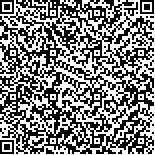下载中心
优秀审稿专家
优秀论文
相关链接
摘要

声音遥感技术可以极大地提高人们对动物的监测、研究和保护能力。本研究设计了一套廉价的陆生动物声音定位系统。该系统集成了市场上现成的录音笔和无线控制设备,价格明显低于许多动物定位系统。使用自主研发的声音定位软件,在X、Y方向上的绝对定位误差最大为1.69 m,可满足大部分动物定位需求;Z方向的定位误差偏大,结果尚不理想。为了揭示影响声音定位系统精度的各种因素及其影响,采用蒙特卡罗方法进行分析,发现录音站点的位置测量误差、到达时间差的估计误差和声速的估计误差均会影响最终的声音定位精度。此外,该方法还可用于在声音定位系统布设阶段确定系统参数的合理数值,包括录音节点总个数和空间尺度。
Advanced sound-based remote sensing technology for terrestrial animals could greatly enhance our ability of animals monitoring, research and protection. In this research, we designed an inexpensive bioacoustic localization system for terrestrial animals, which integrates commercial off-the-shelf recorders and wireless controllers and is much cheaper than most animal localization systems. Combined with the bioacoustic localization software we developed, the system is verifi ed to have the ability to fulfi ll our requirements because its localization errors along the X and Y directions are both less than 1.69 m, although the error along the Z direction is a little bit larger. In order to assess the factors infl uencing the localization accuracy, we applied Monte Carlo simulation method to conduct error analysis. We found that errors, including in surveying recording stations, estimating Time Difference of Arrival (TDOA), and estimating sound velocity, will all infl uence the fi nal localization accuracy. Besides, the Monte Carlo method could also be used for choosing the values of system parameters when implementing a bioacoustic localization system of terrestrial animals, such as the total number of recording stations and spatial ranges of the system.

